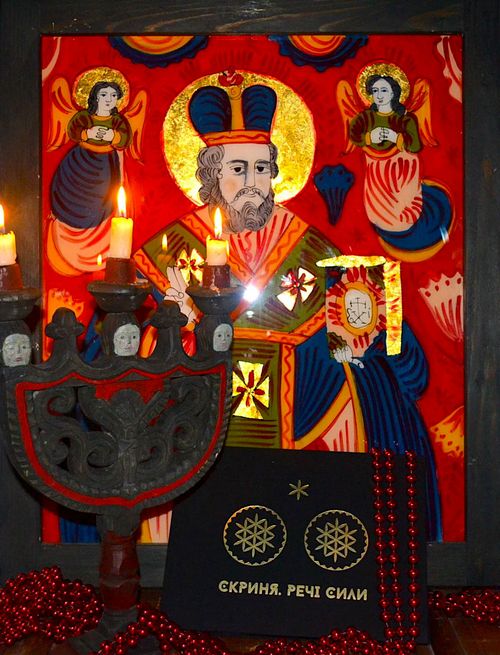Old Lion Publishing House put out recently an art book, Chest. Things of Strength, which makes it possible to fill the Ukrainian world with a large number of messages. This modern-day project breaks the existing stereotypes about Ukrainian culture and raises the latter to a higher level. We speak to the project author Yaryna Vynnytska about a unique “attempt to systematize what once formed the world of our grandmothers and is inexorably disappearing from our life.”
How did you get the idea of “traveling all over the country in search of folk treasure in order to make a list of Ukrainian must-haves – which must be in the heart and house of every Ukrainian”?
“The art book Chest. Things of Strength is my attempt to understand why I, born and raised in a city, have so much passion for traditional culture. Why have I been spellbound so long and desperately by the beauty of the folk masterpieces we used to collect in villages, often picking them up in attics and garbage heaps? For example, peasant women used to wipe the floor with Borshchiv-style shirts because the woolen thread absorbs moisture very well.
“This book is sort of an ethnographic expedition into your own self. I received an injection of love for traditional art from my grandmothers, to whom I dedicated the book. They once were the true priestesses of the family line – they knew all the secrets of existence and the recipe of the best borsch in the world, they taught their granddaughters to recite ‘Our Father,’ cast a spell over water, embroider with the satin stitch, cross stitch, and backstitch, drive away mermaids, bake a wedding loaf, and wail over the dead.
“Traditional culture is, above all, about the cult of ancestors.
“In reality, the dead did not die but only crossed the line, remaining active member of the family. They were invited to the Christmas Eve dinner and offered a ritual dish called ‘kutia.’ A ‘didukh’ was put up in the corner, which was to serve as their dwelling place during Christmastide. Easter eggshells were thrown into rivers so that water carried them to the other world. On Radonitsa, Farewell Sunday, the Green Feast, Dmytro’s Saturday, and All Hallows’ Day – ancestors were honored throughout the year as often as the gods or saints were, for ancestors were the gods that protected the family. You can still see their portraits in glassed-over frames with towels next to the icons in village houses.

“In a world, where traditional values disappear, children phone their parents on holidays only, and ‘going home for Christmas’ no longer is a ‘categorical imperative,’ I want to remind people of the frailty of human relationships and the clumsy attempts of a small group of people to coexist in kinship with one another – their clumsy attempts to love each other.”
Who worked on this art book?
“It was a large team of professionals – designers, photographers, collectors, and editors. But there is an important nuance here: we keep on emphasizing that we are not ethnographers and it is not an ethnographic reference book. It is our intimate history of relationship with the artifacts we came across. I am a linguist by education, a translator, and a journalist. Yulia Tabenska is an artist from Kamianets-Podilsky. The Kyivite Dmytro Osipov is the project’s ideologist and patron. We are all residents of present-day megalopolises, united by love for folk art.”
Why is this interesting and up-to-date?
“It is difficult to work with folk art, for there are very many stylistic cliches here.
“We want to change the filters through which we perceive traditional art the way we change lenses in a photo camera – folk art is in reality exalted and very contemporary.
“Ukraine used to be a rural country. And imperial chauvinism and the myth about Ukrainian inferiority were based on the idea that peasant-related things were of a dubious quality. For example, traditional artists could not be admitted to the professional league because they were not true artists, as they had no formal artistic education.
“We want to show by this project that peasant-related things can be elitist. The shirts made by a peasant woman without an education in a village of Borshchiv raion, Ternopil oblast, are worthy of world podiums. And the old and ‘ancient’ can be avant-garde and topical. For me, traditional has no time limits. It is contemporary, for it is eternal.
“I can already say that Chest… has started successfully. A book is the best gift in general, and this one all the more so. Our Chest… is like a little treasury of interesting things which you can watch endlessly – sort of a book for meditation. It will be interesting to children and their mums. Besides, this book presents the best items of Ukrainian traditional art.”







